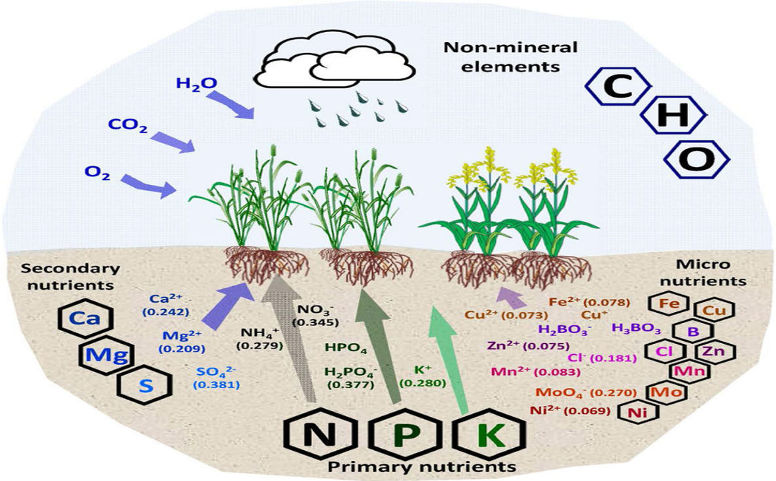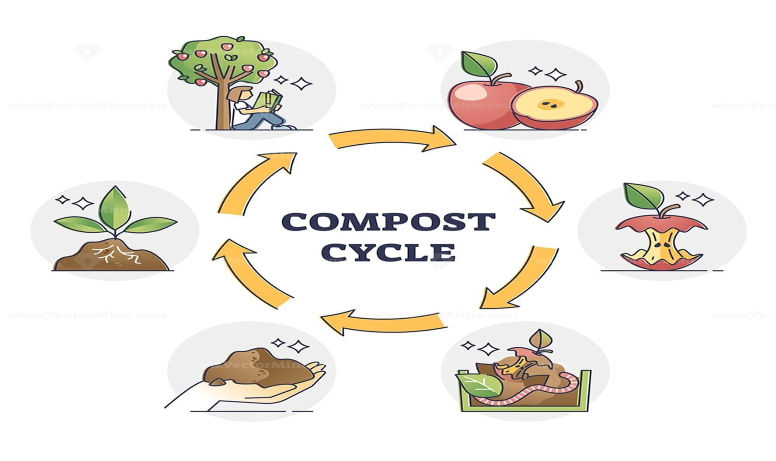The inorganic to organic cycle of plant growth involves the transformation of inorganic nutrients into organic compounds within plants. This process is essential for the growth, development, and reproduction of plants. The key elements involved in this cycle include carbon, oxygen, hydrogen, nitrogen, phosphorus, sulfur, and various micronutrients.
Here is a simplified overview of the inorganic to organic cycle of plant growth:
- Absorption of Inorganic Nutrients:
-
- Plants absorb water and inorganic nutrients from the soil through their roots. These nutrients include nitrogen (N), phosphorus (P), potassium (K), calcium (Ca), magnesium (Mg), sulfur (S), and various micronutrients (such as iron, manganese, zinc, etc.).
- Photosynthesis:
- Plants use sunlight, carbon dioxide (CO2), and water (H2O) to carry out photosynthesis, a process that converts these inorganic substances into organic compounds.
- Chlorophyll, the green pigment in plant cells, plays a crucial role in capturing light energy and converting it into chemical energy.
- This energy is used to drive the conversion of inorganic compounds into organic compounds, primarily glucose.
- Organic Compound Synthesis:
- Glucose serves as a primary building block for the synthesis of various organic compounds, including carbohydrates, proteins, lipids, and vitamins.
- These organic compounds are crucial for the growth, development, and overall functioning of the plant.
- Plant Structure and Storage:
- The synthesized organic compounds are utilized to build plant structures such as leaves, stems, roots, flowers and fruits.
- Excess organic compounds are often stored in various plant tissues, serving as reservoirs of energy and nutrients
- Human Consumption:
- Humans obtain these organic nutrients indirectly by consuming plant-based foods. Fruits, vegetables, grains, and legumes are rich sources of essential vitamins, minerals, carbohydrates, proteins, and fats.
- When we consume plant-based foods, our digestive system breaks down these organic compounds into simpler forms, allowing our bodies to absorb and utilize the nutrients.
This cycle continues as plants continuously absorb inorganic nutrients from the soil, converting them into organic compounds through photosynthesis. Humans, in turn, benefit from this organic transformation by consuming plant-based foods and extracting essential nutrients through digestion and absorption, ultimately supporting our health and well-being.
However, the journey of these nutrients doesn’t end here. After being utilized by humans, these organic compounds are broken down into simpler, inorganic forms through metabolic processes and released back into the environment through waste. Eventually, these nutrients return to the soil, where they can once again be absorbed by plants, completing the cycle of nutrient transformation from inorganic to organic and back to inorganic

